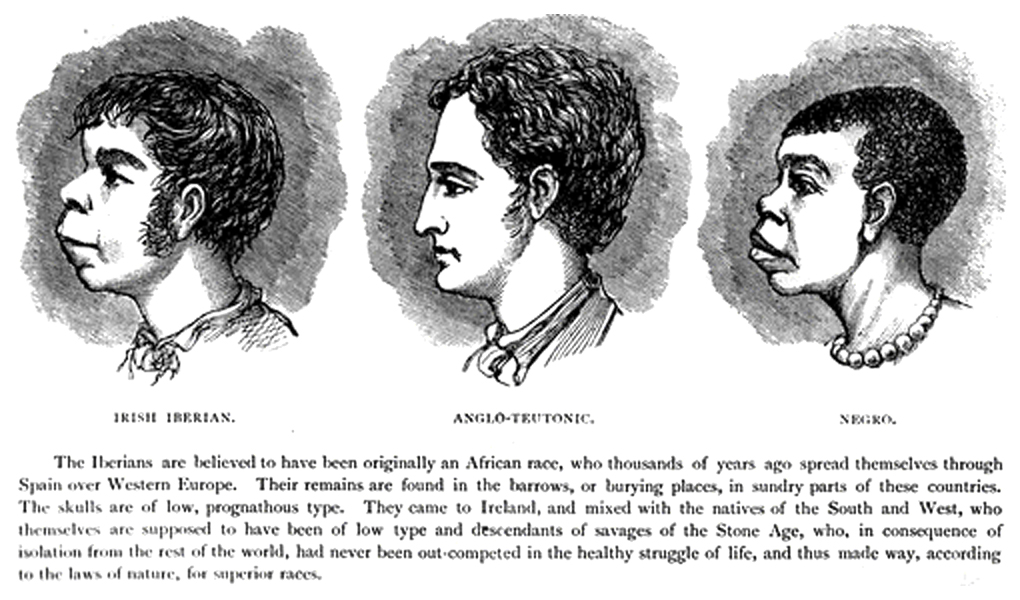First here is Tacitus, a eye witness who saw and engaged with the early inhabitants of Britain.
Tacitus: Agricola Book 1
Who were the original inhabitants of Britain, whether they were indigenous or foreign, is, as usual among barbarians, little known. Their physical characteristics are various, and from these conclusions may be drawn. The red hair and large limbs of the inhabitants of Caledonia point clearly to a German origin. The dark complexion of the Silures, their usually curly hair, and the fact that Spain is the opposite shore to them, are an evidence that Iberians of a former date crossed over and occupied these parts. Those who are nearest to the Gauls are also like them, either from the permanent influence of original descent, or, because in countries which run out so far to meet each other, climate has produced similar physical qualities. But a general survey inclines me to believe that the Gauls established themselves in an island so near to them.
http://www.sacred-texts.com/cla/tac/ag01010.htm
Now here are those Silures, and the Iberians that Tacitus saw in his time. The pictures have been sourced from different museums in Spain and they can easily be verified on the Net.
Here we go:
Ancient Iberians







Eastern Iberia
Modern Iberian Race Theory



shukran,brother,jah,dey,,,nothingheld,backright,n,exact,facts,thepeople,havelacked,wordis/bond,,we,have,efeatured,this,post,tonight,alone,to,be,studied,by,the/group,pace,quod,insula,,noble,jah,dey
“The island Britain (1) is 800 miles long, and 200 miles broad.
And there are in the island five nations; English, Welsh (or
British) (2), Scottish, Pictish, and Latin. The first
inhabitants were the Britons, who came from Armenia”- Anglo Saxon Chronicle – the most important text in British history.
” Anglo-Saxon Chronicle, one of the most important documents that has come down to us from the middle ages. It was originally compiled on the orders of King Alfred the Great in approximately A.D. 890, and subsequently maintained and added to by generations of anonymous scribes until the middle of the 12th Century. The original language was Anglo-Saxon (Old English), but later entries were probably made in an early form of Middle English.
We like to think of this document as the ultimate timeline of British history from its beginnings up to the end of the reign of King Stephen in 1154.”
The Anglo-Saxon Chronicle is surely a marvellous document for all historians of the early middle ages. It must be a great source of insight into attitudes, beliefs, and procedures in the Anglo-Saxon colonies in Britain.
Can the Chronicle, written by west-German colonists, with little understanding of the language, the history, or the culture of the sovereign peoples, (The Britons, The Cornish, the Manx, the Picts, the Welsh, the Scottish), be the ultimate timeline of British history ?
British history is very ancient, much more ancient than the Anglo-Saxon invasion, it is the history an ancient Celtic homeland. It would be marvellous if there was a clear history of the British peoples from earliest times, from pre-historic times.
The Celtic bards, were an established order of historians, following an intense course of education for many years, they knew in the greatest detail all that could be known about history. Bards, like their superiors the Druids, would commit nothing of importance to writing, they knew things of great importance, and considered that to write things down was to profane them, to harm them. For this reason the ancient history of Britain was passed down only in an oral form, from generation to generation, maybe thirty centuries before the invasion of the Anglo-Saxons. I would be delighted to discover that the Anglo-Saxon Chronicle preserved this ancient, previously oral, knowledge.
https://www.youtube.com/watch?v=fSDfz3qV9vI
Those artifacts do definitely not represent ancient Iberians. They are from Ibiza, which where occupied by Phoenicians at that time. Only the first coin is an Iberian coin and it represents a bearded white man. On the other hand, the dark complexion would merely be dark hair as opposed to red hair. Why deduce physical traits from coinage if there are plenty of skeletal remains of Iberians which would offer a great -and undeniable- insight?
Additionally The English dehumanised black people and lumped in Irish people in order to dehumanise them too and legitimise their abuse. It is not that the Irish were black but rather that they were held in the same racist regard and this was a slur. This is also true for Welsh people who are commonly derided to this day by the English so there is a history of racism amongst British sub nations. Native Irish and Welsh peope have black hair and darker skin than the English who were invaded by German Anglo saxons and then Vikings, then french Normans. This is why they were perceived as racially different.